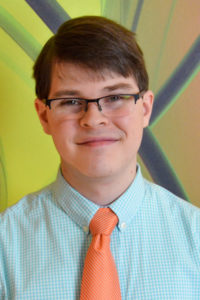 Jonathan Mitchell is looking for uranium in all the wrong places.
Jonathan Mitchell is looking for uranium in all the wrong places.
The proud winner of this year’s Institute of Nuclear Materials Management (INMM) JD Williams Student Paper Award has spent the last year developing a new way to reveal the uranium hidden in transfer pipes and processing equipment at nuclear facilities. Just like grease in a sink, uranium can build up inside these pipes, creating radioactive “holdup deposits” in unexpected places.
“Anywhere you have personnel near holdup, they can receive radiation doses,” Mitchell explained, adding that a large enough mass of uranium hidden inside a pipe could even go critical. “Quantifying holdup is vital in reducing the dosing personnel might receive and improving criticality safety.”
While current tools can identify radiation “hot spots,” it is difficult to find out the shape of a holdup deposit and nearly impossible to estimate its mass.
“If you could use the same system to localize and quantify a mass of holdup,” Mitchell said, “that would be very handy.”
As part of a 10-person team with members from UT, ORNL, and the Y-12 National Security Complex, Mitchell developed a program that transforms the rudimentary “hot spot” image into a 3D model. Thanks to iterative calculations made inside the program, the 3D model is much clearer than the “hot spot” image, can distinguish a deposit of any shape, and—most importantly—allows Mitchell to better estimate the mass of uranium being pictured.
The program has undergone major improvements even in the three months since Mitchell submitted his paper. It now determines the mass of a test sample of uranium with nearly 90% accuracy, and Mitchell has planned additional adjustments to make it even better.
“Once it’s properly developed,” Mitchell said, “all you’d need to do is set the detector in a room where you expect there is holdup, and within a few minutes, you’d know where and how much.”